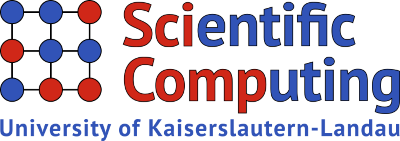Date and Place: Thursdays and hybrid (live in 32-349/online via Zoom). For detailed dates see below!
Content
In the Scientific Computing Seminar we host talks of guests and members of the SciComp team as well as students of mathematics, computer science and engineering. Everybody interested in the topics is welcome.
List of Talks
Event Information:
-
Thu23Jan2020
SC Seminar: Hermann Matthies
11:30SC Seminar Room 32-349
Prof. Dr. Hermann G. Matthies, Institut für Wissenschaftliches Rechnen, TU Braunschweig
Title:
Probability, Algebra, Analysis, and NumericsAbstract:
Probability theory was axiomatically built on the concept of measure by A. Kolmogorov in the early 1930s, using the probability measure and the sigma-algebra as primary objects, and random variables, i.e. measurable functions, and their expectations as secondary. Not long after Kolmogorov ́s work, developments in operator algebras connected to quantum theory in the early 1940s lead to similar results in an approach where algebras of random variables and the expectation functional are the primary objects. Historically this picks up the view implicitly contained in the early probabilistic theory of the Bernoullis.
This algebraic approach allows extensions to more complicated concepts like non-commuting random variables and infinite dimensional function spaces, as it occurs e.g. in quantum field theory, random matrices, and tensor-valued random fields. It not only fully recovers the measure-theoretic approach, but can extend it considerably. For much practical and numerical work, which is often primarily concerned with random variables, expectations, and conditioning, it offers an independent theoretical underpinning. In short words, it is “probability without measure theory”.
This functional analytic setting has also strong connections to the spectral theory of linear operators, where analogies to integration are apparent if they are looked for. This then allows to compute other functions than just polynomials of the algebraic random variables. These links extend in a twofold way to the concept of weak distribution, which describes probability on infinite dimensional vector spaces. Here the random elements are represented by linear mappings, and factorisations of linear maps are intimately connected with representations and tensor products, as they appear in numerical approximations.
Taking this conceptual basis of vector spaces, algebras, linear functionals, and operators gives a fresh view on the concepts of expectation and conditioning, as it occurs in applications of Bayes’ theorem.
For numerical computations, this allows to represent random quantities not only as usual as samples, but as functions of an algebra of known random variables. These may be seen as functions on very high-dimensional domains. As already mentioned, tensor approximations appear naturally, and low-rank factorisations are one way to handle the resulting complexity. The resulting connections to an algebra may for example be used in the numerical processing of compressed representations of such high-dimensional objects.
